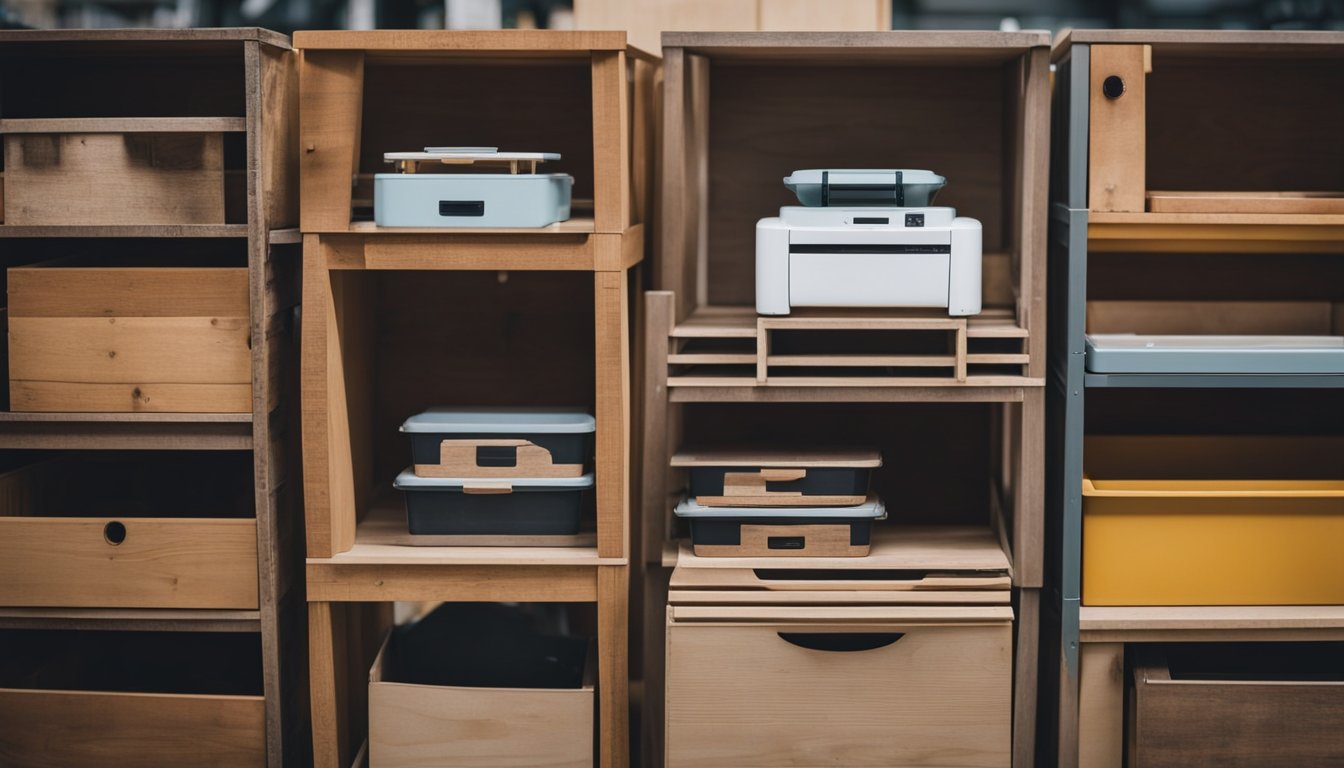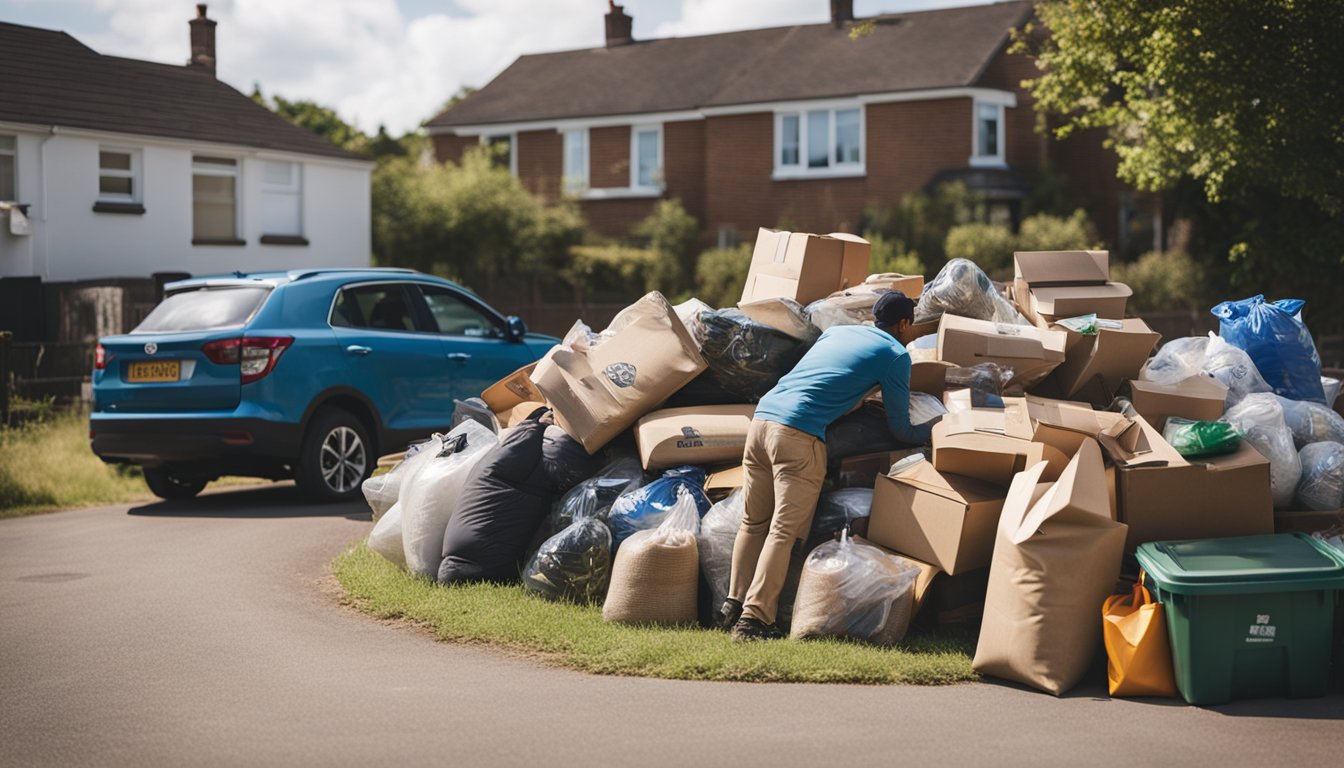Late updated: 15 Aug 2024 14:08
Written by: Sarah Hollister
Eco-Conscious Ways To Dispose Of Old Furniture: Sustainable Solutions for a Cleaner Future
Disposing of old furniture can feel like a daunting task, especially when we want to be eco-conscious. By selling, donating, recycling, or repurposing old furniture, we can minimise waste and contribute positively to the environment. It’s essential that we consider sustainable options that benefit not just our homes but our communities and the planet.

Many people are unaware of the multitude of eco-friendly disposal methods available. We don’t need to throw away that worn-out sofa or outdated dining table. Instead, we can explore innovative ways to refurbish or upcycle our furniture, giving it a new lease on life. This not only spares landfills from additional waste but adds a unique touch to our living spaces.
From donating to local charitable organisations to getting creative with furniture flipping, the options are plentiful and purposeful. Ethical disposal isn't just a trend; it's a responsibility we all share. Through conscious efforts, we can ensure our unwanted pieces find new homes or are disposed of responsibly.
Key Takeaways
- Eco-conscious disposal methods include selling, donating, and recycling old furniture.
- Repurposing and upcycling old items can lead to sustainable living and unique home decor.
- Ethical furniture disposal benefits the environment and supports community initiatives.
Eco-Conscious Disposal Methods
To responsibly dispose of old furniture, there are several eco-conscious methods to consider. These include donating to charities and non-profit organisations, selling through online marketplaces, and utilising recycling and waste management programmes. Each method ensures that furniture is either repurposed or disposed of sustainably.
Donating to Charities and Non-Profit Organisations
Donating furniture in good condition is a highly effective way to ensure it gets a second life. Charities such as Goodwill and the Salvation Army often accept furniture donations, helping to support their community programmes. Additionally, many local non-profits will gladly take gently used items to furnish shelters or provide assistance to those in need.
It's important to check the donation guidelines of each organisation, as they may have specific requirements regarding the condition and type of furniture they accept. We should also consider arranging for pickup services provided by some charities, which can greatly simplify the donation process.
Not only does donating reduce waste, but it also supports social initiatives, turning our unwanted furniture into a valuable resource for someone else. Whether it’s a sofa, bed frame, or table, these donations can make a tangible impact.
Selling and Online Marketplaces
For those looking to monetise old furniture, selling through online marketplaces is a practical option. Platforms like eBay, Gumtree, and Facebook Marketplace allow us to reach a broad audience. These sites make it easy to list items, specify prices, and communicate with potential buyers.
Photos and detailed descriptions are crucial when listing furniture online. High-quality images and honest descriptions about the condition can attract more buyers and ensure a smooth transaction.
Selling furniture not only declutters our space but also ensures that functional items are reused rather than sent to a landfill. By choosing this method, we contribute to a circular economy, promoting the reuse and repurpose of materials.
Recycling and Waste Management Programmes
When furniture is too worn out to be donated or sold, recycling centres and waste management programmes offer an eco-friendly disposal solution. Many modern recycling centres are equipped to dismantle furniture pieces and recover materials such as wood, metal, and fabric for reuse.
We can also look into specific take-back programmes offered by furniture retailers. These programmes often involve the collection and recycling of old items when new purchases are made.
Local councils often provide information on recycling programmes available in our area. It is worth checking these resources as they might offer pickup services or designated drop-off locations for large items.
Utilising these recycling methods ensures that our old furniture is disposed of responsibly, preventing harmful materials from ending up in landfills and contributing to environmental conservation efforts.
Repurposing and Upcycling for Sustainable Living

When it comes to eco-conscious living, repurposing and upcycling old furniture offer innovative ways to combine creativity with sustainability. This approach reduces waste, lowers costs, and brings unique flair to our living spaces.
Creative DIY Projects
Repurposing furniture involves transforming old pieces into new, usable items through innovative DIY projects. For instance, a vintage suitcase can be turned into a chic coffee table, or an old dresser can become a stylish kitchen island. Using everyday items in new ways not only conserves resources but also showcases our creativity.
Wooden pallets are especially versatile; they can be converted into outdoor furniture like benches or tables. Storage solutions can also be created by upcycling, such as using old bookshelves as pantry organisers. By giving each piece a second life, we can personalise our homes uniquely, without incurring high costs.
Refinishing and Restoring with Sustainable Materials
Refinishing old furniture can revamp its appearance while maintaining the integrity of the materials. Opting for sustainable materials like low-VOC paint and natural finishes helps minimise our environmental impact. This approach not only refreshes old pieces but also aligns with our conscious choices in sustainable living.
For example, refinishing kitchen cabinets with eco-friendly stains can retain their usability while updating their look. Using non-toxic adhesives and natural oils ensures that our renovation projects remain eco-friendly. An eco-friendly junk removal service can responsibly handle any leftover materials, directing them to a recycling facility. By making mindful selections in our refinishing processes, we prioritise both aesthetics and sustainability.
Frequently Asked Questions

We are often asked how to dispose of old furniture in eco-conscious ways. Below, we address common questions and provide practical solutions that benefit both the environment and the community.
What are environmentally responsible methods for disposing of unwanted furniture?
Environmentally responsible methods include donating to charities, recycling, selling online or at garage sales, and repurposing pieces for new uses. Each option reduces waste and promotes sustainability.
How can large, unwanted pieces of furniture be disposed of for free?
Many local councils offer free bulk waste collection services. Additionally, charitable organisations often provide free pickup services for usable items, helping you dispose of large furniture responsibly.
What options are available for furniture removal that benefit charitable organisations?
Charitable organisations such as Oxfam, the British Heart Foundation, and local shelters accept furniture donations. Many offer free pickup services for large items, providing both a convenient and meaningful way to dispose of your furniture.
Can you place old furniture on the curb for pickup in certain areas?
Yes, in many areas you can arrange for curbside pickup through your local council. It is essential to check specific regulations and guidelines, as they vary by location. Some regions also have designated bulk waste collection days.
What are the most cost-effective solutions for removing an old sofa?
Selling or donating your sofa is cost-effective and eco-friendly. If these options are not viable, consider hiring a removal service that offers recycling. Some community groups also facilitate furniture swaps or freecycle initiatives.
How does the process of recycling furniture contribute to sustainability?
Recycling furniture helps to minimise waste in landfills and allows materials like wood, metal, and fabric to be repurposed. This process conserves natural resources, reduces energy consumption, and supports a circular economy.
